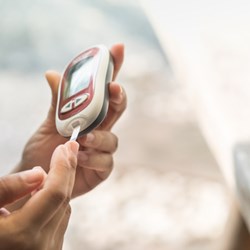Type 1 Diabetes
Type 1 diabetes is a serious lifelong condition where the glucose levels in your body are too high because your body cannot make a hormone called insulin. Insulin is made in the pancreas (an organ near the stomach) and it allows the glucose in our blood to enter your cells and fuel your body.
Type 1 diabetes occurs when the immune system (normally there to fight infection) attacks the cells in the pancreas so you cannot produce any insulin. This results in glucose building up in your bloodstream which can lead to serious complications.
If you have type 1 diabetes you will need to get insulin into your body by either injecting it or using an insulin pump. You will attend regular check-up appointments with your diabetes care team to monitor your blood glucose levels, eyes, kidneys, heart, legs, and feet. Diabetes UK has compiled a list of healthcare checks that should be carried out every year which you can find in the What Care Should I Receive.
To find out more about type 1 diabetes, register for our BERTIE Understanding Type 1 Diabetes and/or Living with Type 1 and Growing up with Type 1 online courses. There is also a list of additional resources about type 1 diabetes below.
Advanced Search
Resource type -
Language -
Type of diabetes -
This course is the first of a two-part series which provides information about life with diabetes. Aimed at anyone diagnosed with type 1 diabetes, it focuses on what diabetes is, how it is treated, complications it can have, as well as what you can do to keep yourself healthy.


